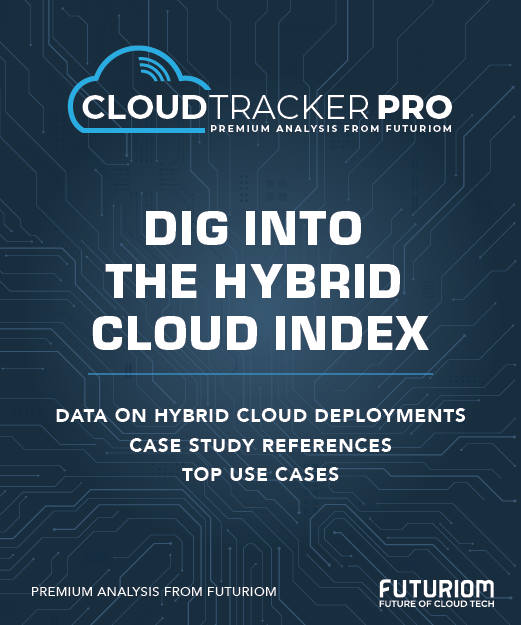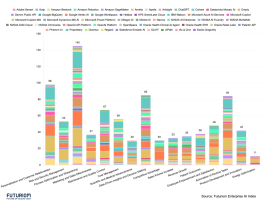VAST Data Declares Itself an AI Operating System

The longer that data and storage platform VAST Data is around, the more appropriate the name seems. In 2023, the company revealed the data platform it had been envisioning since inception. This week, VAST has become even more vast, describing how its architecture is set to become a complete data pipeline for agentic AI.
"The operating system for the thinking machine" is the company's new tagline. It's not exactly analogous to the OS that's on your laptop, but VAST feels "OS" best indicates the scope of its capabilities.
What it really means is that VAST has amassed the pieces to receive data, contextualize it real-time (i.e., place into storage or a database), and serve it up to the agents looking for information. Other products do these things already, but VAST claims an advantage in having unified these pieces into a parallel architecture.
This does not mean VAST is out to challenge NVIDIA's chips-to-clouds AI stack. Think about the OS analogy: Just as Microsoft built a Windows franchise atop Intel's CPUs, VAST believes it can provide the data storage, movement, and processing to make the AI universe go 'round atop NVIDIA (or any other) GPUs.
Some similarities are compelling. VAST DataStore is comparable to an OS's file system; VAST DataBase handles indexing; VAST DataEngine acts as a runtime, a message bus, and a scheduler.
More is happening within DataEngine, too. In March, VAST introduced InsightEngine, a mini-platform that enables real-time AI applications. The one new piece that VAST introduced this week is also part of DataEngine. It's AgentEngine, a framework for running agentic agent pipelines.
VAST Growth
What makes the OS analogy credible is that nearly all of the pieces already exist and have been contributing to VAST's growth. VAST Cofounder Jeff Denworth said VAST grew 3.6x year-over-year in fiscal 2025, which ended in January, and 4.96x in the first quarter of fiscal 2026. That's faster growth than, say, OpenAI or NVIDIA, but it's also subject to the law of small numbers: VAST only recently crossed the $2 billion mark in cumulative software sales. The company is profitable and cash-flow positive. (It's also still privately held after raising $381 million in five rounds. The company has roughly 1,000 employees.)
Much of that business has come from the neoclouds—GPU-laden cloud providers specifically targeting AI workloads. VAST sells to enterprises as well, having been adopted across roughly 25% of the Fortune 100, and has only recently begun making overtures to the hyperscale public clouds.
Building the OS
VAST's ambitions are audacious, but they have a parallel. If we break away from the OS analogy for a moment, VAST's platform resembles the way Intel glommed more and more functions onto the CPU, such as RAID control or graphics acceleration, erasing categories of chip providers in the process. (NVIDIA did well with graphics in the end, of course, but many graphics chipmakers were wiped out.) "We think of ourselves as a killer of categories" over the long term, Denworth said.
Similarly, VAST has amassed multiple capabilities into one software stack. Practically nobody assembles their own OS out of components; likewise, VAST offers its AI platform as a unified stack.
VAST's platform is unified, though, not a Frankenstein's monster of piece-parts. What the company really built was a webscale computing architecture, one that's fully parallel, with no two CPUs ever needed to talk to each other, Denworth said. That means no partitioning, and none of the east-west traffic that causes so many networking headaches. Storage happened to be the first, best use of the architecture, so VAST got its start in that realm. (That should sound familiar to anyone who worked in hyperconverged infrastructure.)
Expanding Universe
This was the plan all along. In a blog, Denworth refers to VAST's ambition as a grand unification theory. That blog is called "Part II" because he's used the term before, to announce the VAST Data Platform in 2023.
This week's announcement isn't a change of plans. It's more that the pace of AI has pushed VAST to go bigger, sooner than expected. The rise of AI agents seems like a particular catalyst. This week's OS announcement includes intentions to release an open-source AI agent every month, to help acclimate customers and inspire new ideas in them. Possible examples would be a video editor, a digital assistant, or an agentic quant for trading (opinion: that one sounds dangerous).
As for who VAST's "OS" competes with, no other vendor appears to have consolidated the same breadth of services. The pieces are available within public clouds but require assembly, Denworth said. This doesn't mean VAST competes with nobody. It's kind of the opposite: VAST competes with providers of storage, databases, inference as-a-service, and so on. Denworth assumes most customers won't want the entire platform from the get-go, so the entry into any given enterprise relies on competing in one or two key sectors.
Meanwhile, VAST will continue expanding its scope. Denworth suggested that the VAST DataSpace -- the federation of all of a customer's cloud and edge environments -- will likely extend to edge devices such as robots.




















